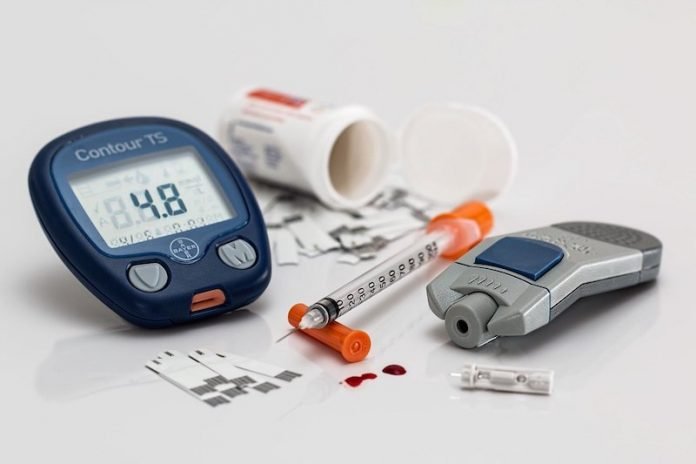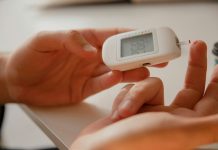
In a new study from Hefei Institutes of Physical Science (HFIPS), researchers have developed a pain-free, non-invasive and fast way detector of early diabetes warning signs.
It is a non-invasive scanning device that checks the advanced glycation end products (AGEs) level concentrated in a person’s skin tissue.
According to the researchers, they have developed the entire technology for manufacturing from scanning to data processing, of which spatially resolved fluorescence spectroscopy of skin tissue was considered the key technology by the team.
AGEs are a class of stable end products occurring as a result of condensation, rearrangement, cleavage and oxidation modification of free amino groups of large-molecule substances including proteins, amino acids, lipids or nucleic acids with aldehyde groups of reducing sugars under non-enzymatic conditions.
Generally speaking, AGEs increase slowly at low levels in the skin of people who have normal glycometabolism; however, accelerated accumulation of AGEs could be brought about by bad living habits, including smoking.
AGE increase can induce insulin resistance and impair islet β cells, which damages glucose regulation and then leads to diabetes. That is why AGEs have been thought to be an early risk factor for diabetes.
In the study, the team developed a strategy to detect AGEs in skin tissue by emitting low intensity (but highly safe) light on the skin.
Then the AGEs will reflect a fluorescence signal that is collected by a high-precision and high-sensitivity array detector. After a data process and analysis, a risk assessment report is printed out.
This new equipment opens the door to early warning of diabetes then the people with high risk could do something on it, like changing life habits.
And it is pain-free and non-invasive which we think will make the detect method easier to be applied.
The team is deploying its equipment in many hospitals, healthcare centers and community services.
If you care about diabetes, please read studies about this diabetes drug could cause dangerous body infection and findings of people with diabetes need to prevent this dangerous liver disease.
For more information about diabetes treatment and prevention, please see recent studies about people with diabetes need to know this eye disease and results showing that this drug may protect kidney and heart health in people with diabetes.
One researcher of the study is Wang Yikun.
Copyright © 2021 Knowridge Science Report. All rights reserved.


